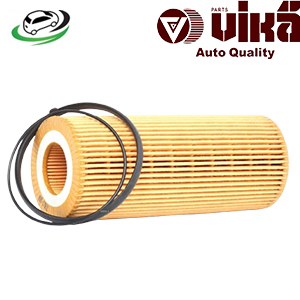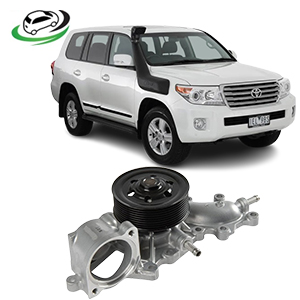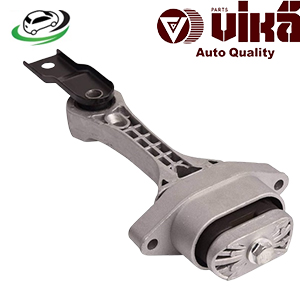Get VW Jetta III-2.0/TDI/ Jetta IV-1.8T/2.0/TDI/ Jetta IV GLI 1.8T/ New Beetle-1.8T/2.0 Rear Engine Mount 1J0199851N
The rear engine mount is a critical component in a vehicle’s engine mounting system, responsible for securing the engine to the vehicle’s chassis while absorbing vibrations and torque produced during engine operation. It plays a significant role in maintaining stability and comfort while driving, as well as ensuring that engine forces do not transfer into the cabin. In this detailed explanation, we will cover the rear engine mount’s functions, importance, construction, maintenance tips, and common issues in about 1000 words.
Functions of the Rear Engine Mount
- Engine Stability and Alignment: The primary function of the rear engine mount is to secure the engine in place and maintain its alignment with the transmission and driveshaft. The rear engine mount works in conjunction with other engine mounts (typically front and side mounts) to hold the engine firmly within the engine bay, preventing unwanted movement during driving.
- Vibration Dampening: Engine mounts, including the rear mount, are designed to absorb and isolate vibrations generated by the engine. The rear engine mount helps minimize the transmission of these vibrations into the vehicle’s cabin, creating a smoother, quieter ride. This is especially important because engines produce significant vibrations during acceleration, idling, and shifting, and without proper mounting, these vibrations can result in discomfort and increased noise inside the cabin.
- Torque Control: The rear engine mount helps control engine torque, or the twisting force generated during acceleration and deceleration. When the engine produces torque, it tends to rotate on its mounts, and the rear mount plays a crucial role in controlling this movement. Without a functioning rear engine mount, excessive torque could cause misalignment in the engine-transmission assembly, potentially damaging other components.
- Load Distribution: The rear engine mount helps distribute the weight of the engine and transmission evenly across the vehicle’s frame. This load distribution prevents stress concentration in any one area of the vehicle’s chassis, reducing the risk of structural damage over time.
- Transmission of Power: The rear engine mount supports the alignment between the engine, transmission, and drivetrain. Proper alignment ensures that power is transmitted efficiently from the engine to the wheels without any loss or misalignment that could lead to drivetrain issues or reduced performance.
Construction and Materials of a Rear Engine Mount
The rear engine mount typically consists of the following components:
- Metal Brackets: The core structure of the engine mount is usually made from high-strength steel or aluminum. These metal brackets bolt to the engine and vehicle frame, providing the structural support needed to secure the engine in place.
- Rubber Insulation: Most rear engine mounts include rubber or polyurethane inserts, which provide the necessary vibration isolation. These elastomeric materials are designed to absorb the vibrations produced by the engine and prevent them from being transmitted to the vehicle’s cabin. Rubber mounts are the most common, but high-performance or heavy-duty vehicles may use polyurethane due to its greater durability.
- Hydraulic Engine Mounts: In modern vehicles, some rear engine mounts are filled with a hydraulic fluid. These mounts provide an additional level of vibration dampening by using fluid to absorb energy. Hydraulic mounts are particularly effective at isolating both high-frequency and low-frequency vibrations, making them popular in luxury and high-performance vehicles.
- Heat Shields: Due to the proximity of the rear engine mount to the engine and exhaust system, many mounts include heat shields to protect the rubber or polyurethane inserts from heat damage. Prolonged exposure to high temperatures can degrade the materials, leading to premature failure.
Importance of the Rear Engine Mount
- Driver and Passenger Comfort: One of the most important roles of the rear engine mount is to enhance the comfort of the driver and passengers by reducing noise, vibration, and harshness (NVH) levels inside the cabin. Without a functional rear engine mount, the vibrations from the engine would travel directly into the vehicle’s body, resulting in a noisy and uncomfortable driving experience.
- Protection of Engine and Transmission Components: By securely holding the engine in place and minimizing movement, the rear engine mount helps protect the engine and transmission from damage. Excessive engine movement due to a worn or damaged mount can cause misalignment, leading to issues such as damaged hoses, stretched wiring, and accelerated wear on drivetrain components.
- Vehicle Performance: A well-functioning rear engine mount helps maintain proper engine alignment and transmission of power. If the rear mount fails, the engine can shift out of alignment with the transmission, which can result in reduced vehicle performance, sluggish acceleration, and even drivetrain failure.
- Reduction of Wear and Tear: By controlling engine movement and absorbing vibrations, the rear engine mount helps reduce wear and tear on other engine mounts, suspension components, and drivetrain parts. This contributes to the overall longevity of the vehicle and its components.
Maintenance of the Rear Engine Mount
- Regular Inspection: It’s important to inspect the rear engine mount during routine vehicle maintenance. Look for signs of wear such as cracks in the rubber, oil contamination, or visible damage to the metal brackets. Checking for excessive engine movement during acceleration or braking can also help detect mount issues early.
- Addressing Vibrations: If you notice increased vibrations or noise in the cabin, especially during idling or acceleration, it may be a sign that the rear engine mount is beginning to fail. Addressing these symptoms early can prevent further damage to the engine and drivetrain.
- Monitor for Fluid Leaks: If your vehicle uses a hydraulic rear engine mount, check for signs of fluid leaks. Leaking hydraulic fluid can reduce the mount’s effectiveness and lead to increased vibrations. Replacing a leaking hydraulic mount is essential to maintaining vehicle comfort and performance.
- Replace as Part of Routine Maintenance: Engine mounts, including the rear mount, should be replaced as part of routine vehicle maintenance, especially in high-mileage vehicles. Most engine mounts last between 60,000 to 100,000 miles, depending on the type of driving and vehicle load. Replacing mounts proactively can prevent unexpected failures.
- Use OEM or High-Quality Aftermarket Parts: When replacing the rear engine mount, always use original equipment manufacturer (OEM) parts or high-quality aftermarket replacements. Inferior-quality mounts may not provide the same level of vibration dampening or durability, leading to premature failure and potential damage to other components.
Common Issues with Rear Engine Mounts
- Rubber Deterioration: Over time, the rubber or polyurethane insert in the rear engine mount can degrade due to exposure to heat, oil, and road contaminants. When the rubber cracks or hardens, the mount loses its ability to absorb vibrations, leading to increased NVH levels.
- Engine Movement: A failing rear engine mount may cause noticeable engine movement during acceleration, braking, or gear shifts. This movement can strain other engine components, including hoses, cables, and exhaust connections, leading to additional repairs.
- Increased Vibrations and Noise: One of the most common signs of a failing rear engine mount is increased vibrations in the vehicle cabin. This is often most noticeable when the vehicle is idling or under heavy acceleration. If left unchecked, this can lead to a rough driving experience and potential damage to other parts of the vehicle.
- Transmission Misalignment: If the rear engine mount fails, the engine can shift out of alignment with the transmission, causing difficulty in gear shifting or even transmission damage. This can lead to a loss of power, poor vehicle performance, and increased wear on the transmission components.
- Heat Damage: Rear engine mounts located near exhaust components can suffer from heat damage, especially if the mount is not equipped with a heat shield. Prolonged exposure to high temperatures can cause the rubber or polyurethane to degrade faster, leading to premature failure.
Conclusion
The rear engine mount is a vital component in maintaining the stability, alignment, and comfort of your vehicle. Its role in dampening vibrations, controlling engine torque, and distributing engine weight is crucial for the performance and longevity of both the engine and transmission. Regular maintenance and timely replacement of a worn or damaged rear engine mount can prevent costly repairs and ensure a smoother, quieter driving experience.
By understanding the function and importance of the rear engine mount, as well as recognizing the common signs of failure, vehicle owners can proactively maintain their mounts and enjoy a more reliable and comfortable vehicle for years to come.
Follow us on Facebook for more parts.




Reviews
Clear filtersThere are no reviews yet.